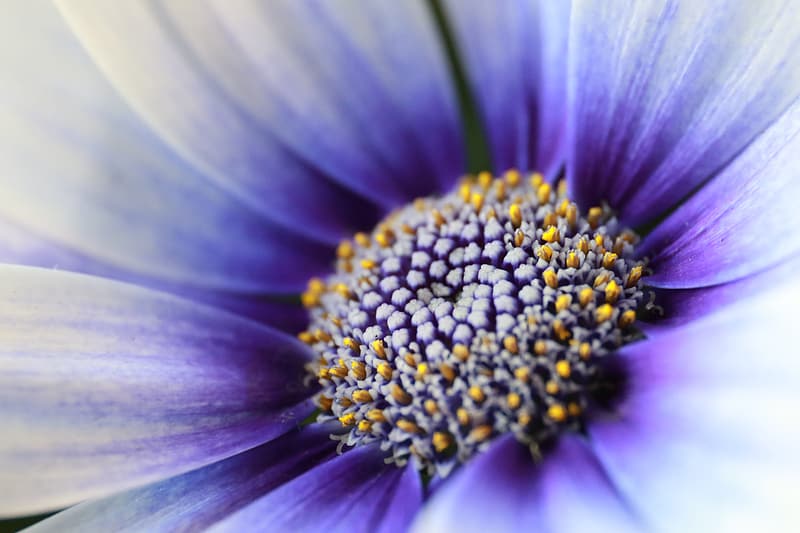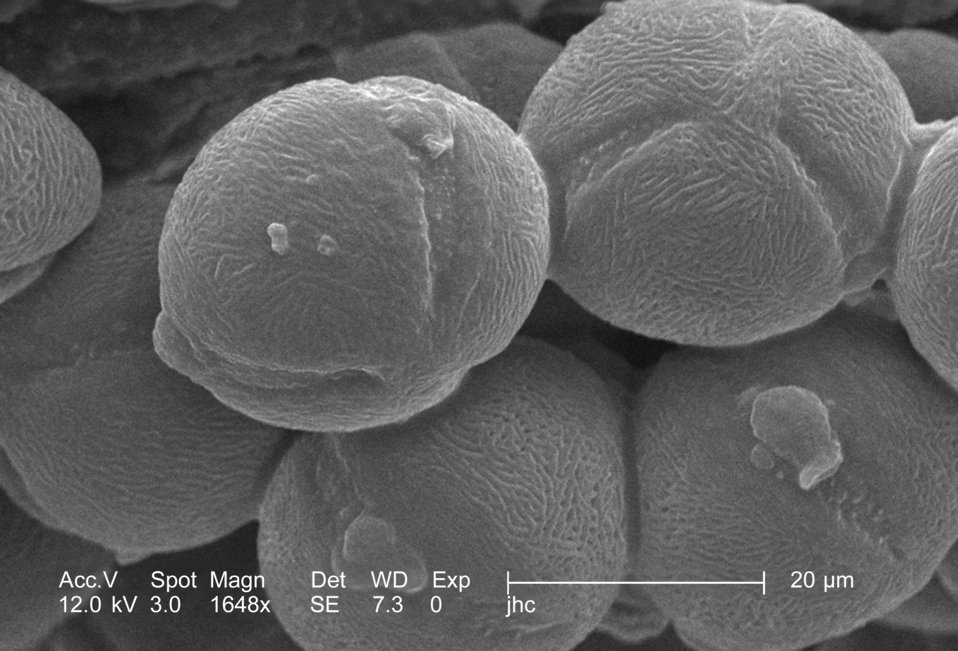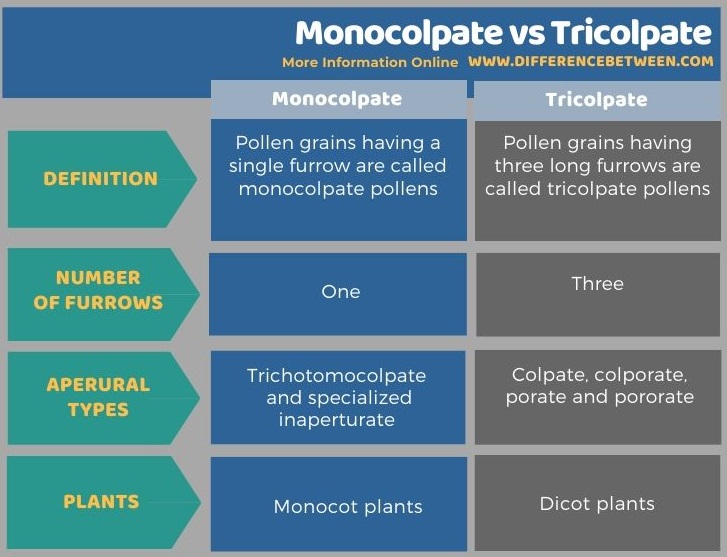Difference Between Monocolpate and Tricolpate
Table of Contents
The key difference between monocolpate and tricolpate is that monocolpate pollens have a single furrow on one side while tricolpate pollens have three meridionally placed furrows. Another major difference between monocolpate and tricolpate is that monocolpate pollens are characteristic to monocotyledons while tricolpate pollens are characteristic to dicotyledons.
Pollen grains are male microgametophytes of seed plants. They produce male gametes or sperms. Colpus is an aperture in the pollen grain of angiosperms. It is a long furrow-like aperture. The pollens that have such apertures (colpi) are known as colpate pollens. In angiosperms, there are two types of colpate pollen grains. They are monocolpate pollen grains and tricolpate pollens grains. Monocolpate pollens have only one furrow on one side. Tricolpate pollens have three meridionally placed furrows. In nature, monocot plants bear monocolpate pollens while dicot plants have tricolpate pollens.
CONTENTS
1. Overview and Key Difference
2. What is Monocolpate
3. What is Tricolpate
4. Similarities Between Monocolpate and Tricolpate
5. Side by Side Comparison – Monocolpate vs Tricolpate in Tabular Form
6. Summary
What is Monocolpate?
Monocolpate pollens are pollen grains that have a single furrow on one side. These pollens are characteristic of monocot plants. Plants that belong to Liliaceae, Arecaceae, Asparagaceae and Ginkgoaceae have typical monocolpate pollens. Therefore, cycads and Ginko mainly produce monocolpate pollens. They have a persistent and recognizable colpus in their pollens. Generally, monocolpate pollens have the longest dimension of 40 micrometres or less. However, there are monocolpate pollens which have dimension over 40 micrometres.

Figure 01: Flower Pollen
What is Tricolpate?
Pollen grains that have three furrows are known as tricolpate pollens. Most dicot plants bear tricolpate pollens. However, not all dicots have tricolpate pollens. Due to these colpi, tricolpate pollens possess a shape. Acanthaceae family has characteristic tricolpate pollens. Cerocarpus ledifolius, which belongs to family Rosaceae, and Quercus agrifolia, which belongs to family Fagaceae produce tricolpate pollens.

Figure 02: Tricolpate Pollen
Eudicots have also been called tricolpates earlier. Having three colpi paralleling the polar axis of pollens is a distinct trait of true dicotyledons.
What are the Similarities Between Monocolpate and Tricolpate?
- Monocolpate amd tricolpate are two types of colpate pollen grains.
- Monocolpate and tricolpate pollen grains are characteristic to angiosperms.
- They have elongated furrows in their pollen grains.
What is the Difference Between Monocolpate and Tricolpate?
Monocolpate and tricolpate are two fundamental groups of pollens found in angiosperms. Monocolpate pollens have only one long furrow while tricolpate pollens have three long furrows. So, this is the key difference between monocolpate and tricolpate. In fact, typical monocolpate pollens are seen in monocotyledons while typical tricolpate pollens are seen in most dicotyledon plants.
Moreover, apart from monocolpate, trichomocolpate, and specialized inaperturate, are two types of apertural types of monocolpate while colpate, colporate, porate and pororate are apertural types of tricolpate.
The following infographic summarizes the difference between monocolpate and tricolpate pollen grains.

Summary – Monocolpate vs Tricolpate
Colpus is an elongated aperture seen in pollen grains. Some pollens have only one colpus while some pollens have more than one colpus. The pollens that have one furrow are known as monocolpate pollens, and they are found in monocot plants. The pollens that have three furrows are known as tricolpate pollen grains, and they are found in most dicot plants. Thus, this is a summary of the difference between monocolpate and tricolpate.
Reference:
“Botany Online: Interactions Between Cells – Angiosperm Pollen – SEM”. Www1.Biologie.Uni-Hamburg.De, 2020, Available here.
“Eudicots”. En.Wikipedia.Org, 2020, Available here.
Image Courtesy:
1. “Shallow focus photo of flowers pollens” (CC0) via Pikrepo
2. “Under a high magnification of 1648x, this scanning electron micrograph (SEM) revealed…” By CDC/ Janice Carr, Betsy Crane – Public Health Image Library via Public Domain Files
ncG1vNJzZmivp6x7pbXFn5yrnZ6YsqOx07CcnqZemLyue8OinZ%2Bdopq7pLGMm5ytr5Wau265zqemnKecpa61sYyapZ1lpKe2pLvLqZitnV8%3D